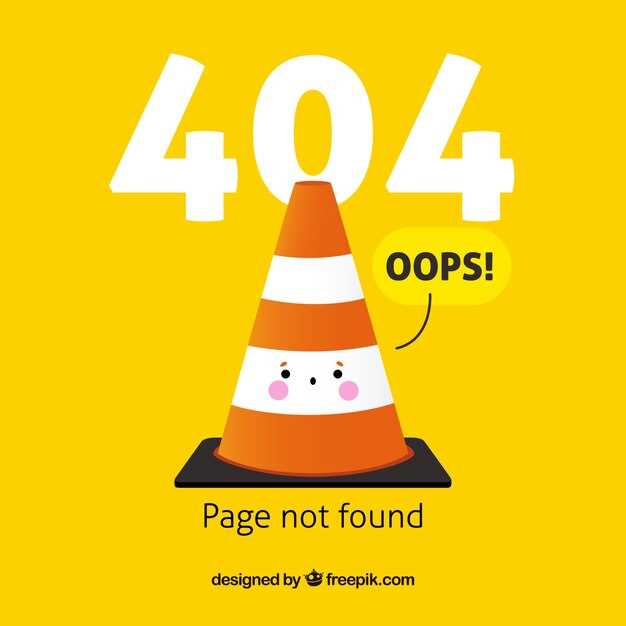
When it comes to vehicle maintenance and safety, warning lights serve as crucial alerts for drivers. These lights illuminate on your dashboard to indicate potential issues that could compromise your car’s performance or safety. Understanding what each light signifies is essential for every vehicle owner.
Ignoring these alerts can lead to severe consequences, including costly repairs or dangerous driving conditions. Certain warning lights signify problems that require immediate attention. Being aware of these critical indicators can help you make informed decisions and avoid breakdowns on the road.
In this article, we will explore the most important warning lights that you should never overlook. From engine malfunctions to brake system alerts, recognizing these signals can save you time, money, and potentially your life. Stay informed and keep your vehicle running smoothly by understanding these essential alerts.
Understanding the Meaning Behind Common Dashboard Lights

Dashboard lights serve as essential alerts for drivers, indicating various issues or system statuses within the vehicle. Each light has a specific meaning, and understanding these alerts can help maintain vehicle safety and performance.
One of the most critical dashboard lights is the check engine light. This alert indicates that the engine control unit has detected a problem. It could range from a loose gas cap to a more serious engine malfunction. Ignoring this light can lead to severe engine damage and costly repairs.
Another important alert is the oil pressure warning light. When this light illuminates, it signifies that the oil pressure is either too low or too high. Low oil pressure can result in insufficient lubrication for engine components, potentially leading to engine failure. If this light appears, stopping the vehicle immediately is advisable.
The battery warning light indicates that there may be an issue with the vehicle’s electrical system, often related to the battery or alternator. A malfunctioning battery can hinder the vehicle’s ability to start and operate correctly. If this light comes on, it is essential to check the battery and charging system right away.
The brake warning light serves as an alert for various braking issues, including low brake fluid levels or a problem with the anti-lock braking system (ABS). Engaging brakes is crucial for safety, and any malfunction should be addressed immediately to prevent accidents.
Another significant dashboard alert is the tire pressure monitoring system (TPMS) light. This alert indicates that one or more tires may be under-inflated, posing a risk for blowouts and decreased handling performance. Regularly checking tire pressure can help ensure safe driving conditions.
Lastly, the coolant temperature warning light informs the driver that the engine is overheating. Ignoring this light can lead to severe engine damage due to overheating. If illuminated, the vehicle should be stopped to prevent further damage.
In conclusion, recognizing and understanding dashboard lights is crucial for vehicle maintenance and safety. Each alert serves as a reminder to take necessary actions to address potential issues before they escalate into significant problems.
Critical Indicators: When to Seek Professional Help

When operating a vehicle, it’s vital to pay attention to warning lights that indicate potential issues. Certain alerts require immediate action and professional intervention. Recognizing these critical indicators can help prevent serious problems down the road.
One of the most urgent lights to heed is the engine warning light. This alert signals that there is a malfunction in the vehicle’s engine system. Ignoring this light can lead to severe engine damage, resulting in costly repairs.
The oil pressure warning light is another critical alert. This light indicates that the oil pressure is too low, which can cause overheating and severe wear on engine components. If this light activates, stop the vehicle safely and check the oil level immediately.
Additionally, the brake warning light should never be overlooked. If this light illuminates, it may indicate a problem with the braking system, such as low brake fluid or worn brake pads. Promptly seeking help can ensure your safety and the reliability of your vehicle.
Another essential indicator is the battery warning light. When this light appears, it suggests issues with the battery or electrical system. It can lead to the vehicle not starting or electrical failures if not addressed quickly.
Finally, the tire pressure monitoring system (TPMS) light alerts you to low tire pressure. Driving with underinflated tires can lead to decreased fuel efficiency and increased risk of tire blowouts. Consult a professional to check tire conditions and pressures if this alert is activated.
In conclusion, any of these warning lights should not be ignored. They indicate serious issues that require immediate attention from a qualified technician to ensure safety and prevent further complications.
Engine Warning Light: Signs of Potential Engine Failure
The engine warning light on your dashboard is a critical indicator that requires immediate attention. Ignoring this light could lead to severe engine damage and costly repairs. Understanding the signs associated with this warning light can help you prevent potential engine failure.
When the engine warning light illuminates, it indicates that the vehicle’s onboard diagnostics system has detected an issue that may affect engine performance. Here are some common signs that may accompany the warning light:
| Sign | Description |
|---|---|
| Strange Noises | Unusual sounds such as knocking, ticking, or grinding may indicate internal engine problems. |
| Reduced Power | You may experience a noticeable loss of power or acceleration, making it difficult to drive. |
| Fuel Efficiency Changes | A sudden decline in fuel efficiency can signify that the engine is not running optimally. |
| Overheating | Excessive heat can lead to engine damage; watch for rising temperature gauges. |
| Smoke or Steam | Seeing smoke or steam coming from the engine area is a sign of potential failure and should be addressed immediately. |
To determine the exact issue causing the engine warning light to illuminate, it is advisable to conduct a diagnostic scan. A professional mechanic can interpret the error codes and guide you through necessary repairs. Regular maintenance and prompt reaction to warning lights are essential for prolonging your engine’s life.
Brake System Alert: Importance of Timely Action
One of the most critical warning lights displayed on your dashboard is the brake system alert. This light signifies potential issues with your vehicle’s braking system, which can have serious implications for your safety and the safety of others on the road.
Ignoring the brake system light can lead to severe consequences, including:
- Increased stopping distances
- Complete brake failure
- Inability to control the vehicle during emergency situations
- Higher repair costs if issues worsen
When the brake system light illuminates, it can indicate several problems, such as:
- Low Brake Fluid: This may be caused by leaks in the system, leading to reduced braking efficiency.
- Worn Brake Pads: If the pads are thin, your brakes will not function effectively, increasing stopping time.
- Malfunctioning Anti-lock Braking System (ABS): Issues with the ABS can lead to loss of brake control during slippery conditions.
- Brake System Imbalance: This can result from uneven wear or improper brake adjustment, affecting vehicle handling.
To ensure your vehicle operates safely, take the following actions if the brake system light appears:
- Check the brake fluid level and top it up if necessary.
- Inspect brake pads for wear and replace them if needed.
- Consult with a professional mechanic to assess brake system functionality.
- Regularly maintain your braking system to prevent future issues.
Timely action in response to the brake system alert can prevent dangerous situations and costly repairs. Always prioritize brake safety to ensure a secure driving experience.
Oil Pressure Light: Preventing Serious Engine Damage
The oil pressure light is a crucial alert system in your vehicle’s dashboard. Ignoring this warning can lead to catastrophic engine failure. Understanding its significance and taking appropriate action is essential for vehicle maintenance.
When the oil pressure light illuminates, it indicates that the oil pressure is below the optimal level. This can happen for several reasons:
- Low oil levels due to leaks or consumption.
- Worn-out oil pump that fails to circulate oil effectively.
- Dirty or degraded oil that fails to lubricate components.
- Faulty oil pressure sensor providing incorrect readings.
Each of these issues can lead to severe engine damage if not addressed promptly. The oil in your engine acts as a lubricant, ensuring that moving parts operate smoothly and reducing friction. When this system fails, the consequences can be dire:
- Overheating: Insufficient oil pressure can cause the engine to overheat, leading to warped components.
- Increased Wear: Without proper lubrication, metal parts grind against each other, significantly shortening engine life.
- Seizure: In extreme cases, the engine could seize, requiring costly repairs or even a complete engine replacement.
If the oil pressure light comes on while driving, it is vital to take immediate action. Follow these steps:
- Pull over to a safe location and turn off the engine.
- Wait for a few minutes, then check the oil level using the dipstick.
- If the oil is low, add the appropriate oil type recommended by your vehicle manufacturer.
- If the oil level is adequate, consider consulting a mechanic to investigate the oil pump or sensor issue.
Remember, the oil pressure light is more than just an alert; it’s a warning that should not be ignored. Regular oil changes and maintenance checks can help prevent the activation of this light and extend the life of your engine.
Battery Alert: Ensuring Your Vehicle’s Electrical System is Safe
The battery alert light on your dashboard is a critical indicator of your vehicle’s electrical health. When this light is activated, it signifies that your battery is not charging properly or that there may be an issue with the electrical system. Ignoring this warning can lead to a complete battery failure, leaving you stranded and requiring costly repairs.
There are several reasons the battery light may illuminate. A common culprit is a malfunctioning alternator, which is responsible for recharging the battery while the engine is running. If the alternator fails, the battery will eventually deplete, leading to starting issues or complete electrical shutdown. Additionally, loose or corroded battery terminals can disrupt the power flow, triggering the alert light on your dashboard.
If you notice the battery light illuminated, it is essential to take immediate action. First, check for loose connections or any visible corrosion around the battery terminals. If everything appears secure, it’s wise to have your battery and alternator tested by a professional. Regular maintenance can help prevent issues that may cause the battery warning light to activate, ensuring that your vehicle’s electrical system remains reliable.
